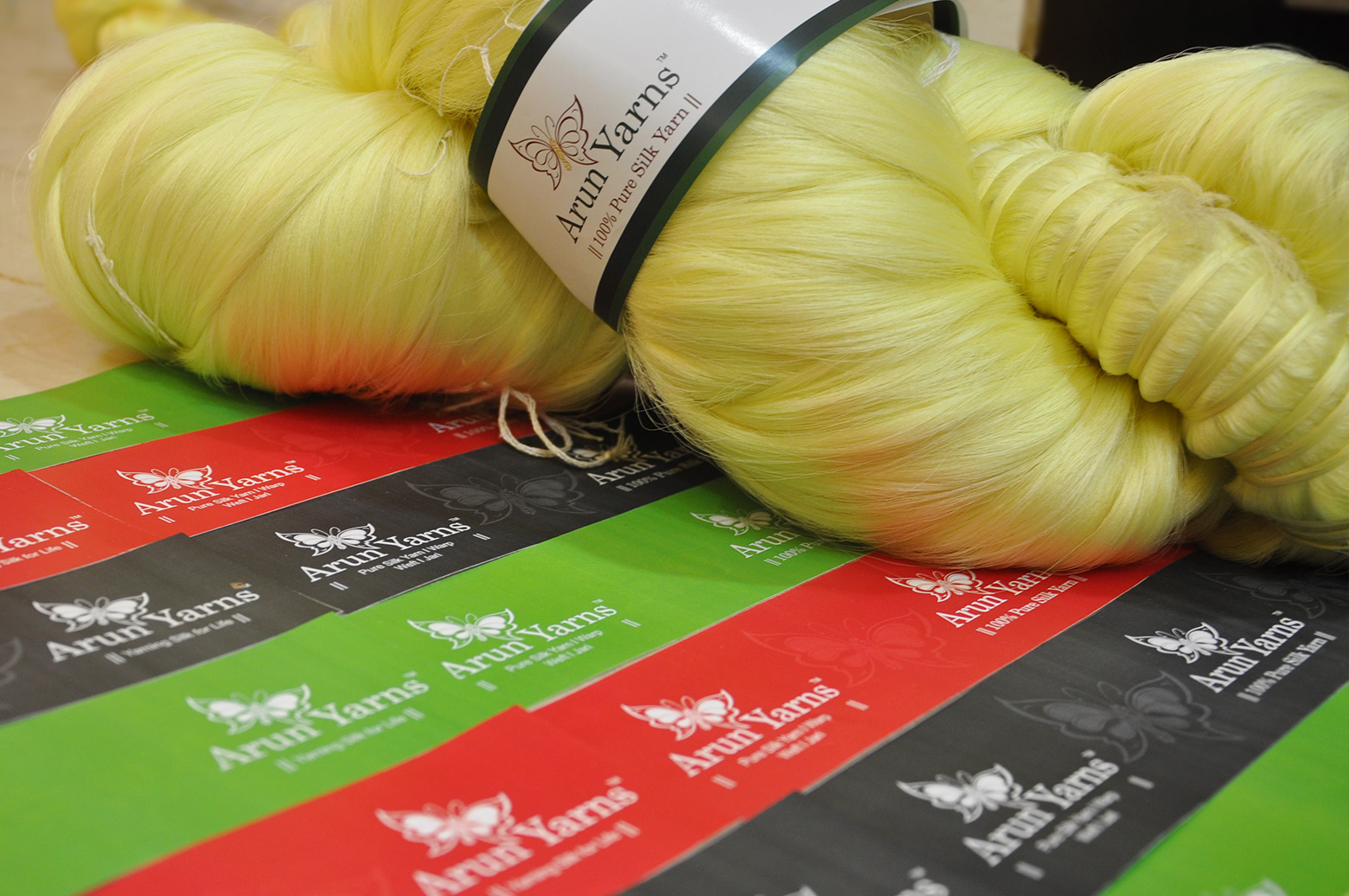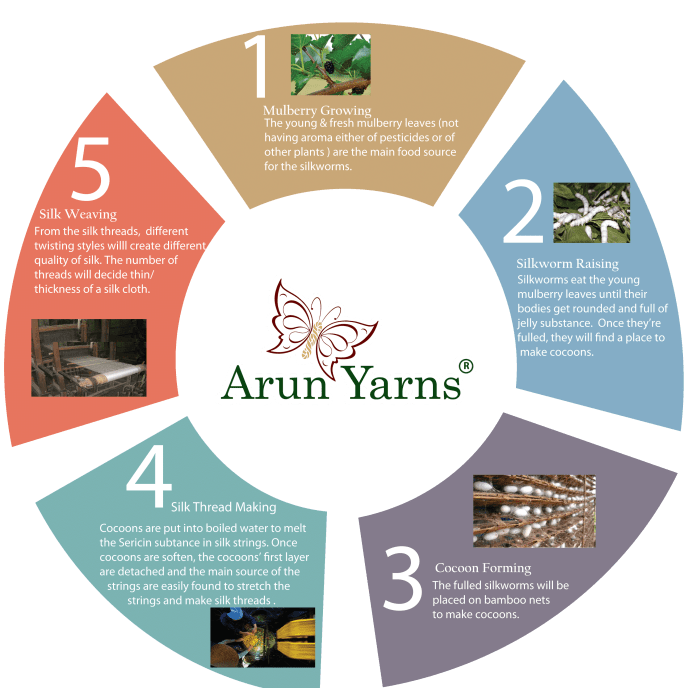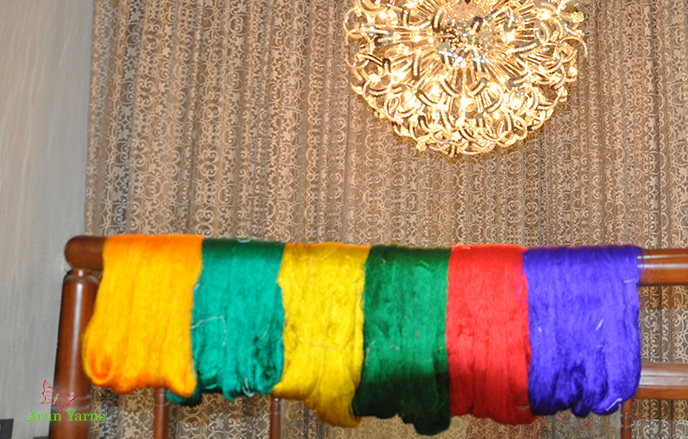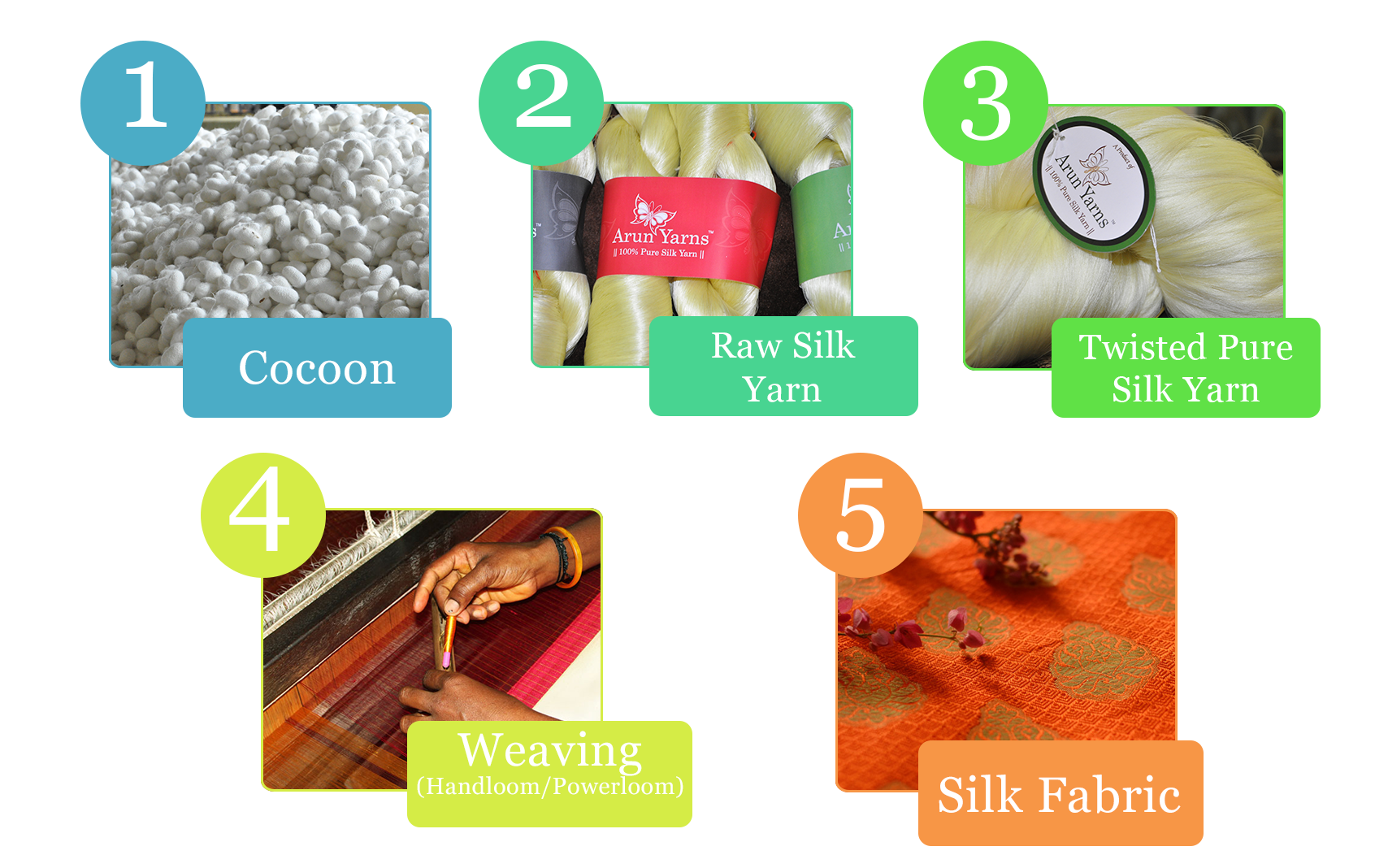Types of Silk


Mulberry Silk: The King
Mulberry silk is the most widely produced silk variety worldwide. It is derived from silkworms that feed exclusively on mulberry leaves. In India, the majority of mulberry silk production comes from Karnataka, Andhra Pradesh, West Bengal, Tamil Nadu, and Jammu & Kashmir, with these regions accounting for nearly 90% of the total output.
What sets mulberry silk apart is its exceptional quality—it is the finest and most refined type of silk available. Products made from 100% mulberry silk are highly durable and are used to create some of the most luxurious silk goods. Additionally, mulberry silk contains a natural protein called sericin, which minimizes the risk of allergic reactions, making it a safe and healthy choice for individuals with sensitivities.

Tasar Silk: Rustic Elegance
Tasar (Tussah) silk is a coarse, copper-toned silk primarily used for furnishings and interior décor. While it lacks the high sheen of mulberry silk, it possesses a unique texture and appeal. This silk is produced by the Antheraea mylitta silkworm, which thrives on Asan and Arjun trees. Unlike cultivated silk, tasar silk rearing takes place naturally, with silkworms feeding on trees in the open environment.
In India, tasar silk is predominantly produced in Jharkhand, Chhattisgarh, and Odisha, with additional production in Maharashtra, West Bengal, and Andhra Pradesh. Tasar silk cultivation plays a vital role in supporting tribal communities, serving as a key source of livelihood.

Muga Silk: Assam’s Golden Treasure
Muga silk, renowned for its rich golden-yellow hue, is exclusive to India and a symbol of pride for Assam. It is produced by the semi-domesticated multivoltine silkworm Antheraea assamensis, which feeds on the aromatic leaves of Som and Soalu plants. Like tasar silk, muga silkworms are reared in their natural habitat on trees.
Deeply rooted in Assam’s tradition and culture, muga silk is a high-value fabric used in crafting exquisite sarees, mekhalas, chaddars, and other traditional garments.

Eri Silk: The Fabric of Peace
Also known as Endi or Errandi, Eri silk is a unique multivoltine variety spun from open-ended cocoons, unlike other types of silk. It is produced by the domesticated silkworm Philosamia ricini, which primarily feeds on castor leaves.
Ericulture is traditionally practiced as a household activity, particularly for its protein-rich pupae, which are considered a delicacy among tribal communities. As a result, Eri cocoons remain open-ended and are spun rather than reeled. The silk is primarily used by indigenous communities to weave chaddars (wraps) for personal use.
In India, Eri silk production is mainly concentrated in the northeastern states, particularly Assam, with additional presence in Bihar, West Bengal, and Odisha.

The process of Making Silk
RAW SILK
After silkworms are reared into cocoons by farmers, the cocoons are brought to nearby silk cocoon markets and auctioned. Licensed silk reelers are granted the rights to bid on the cocoons, with prices determined based on quality. Once purchased, the reelers process the cocoons to extract silk yarn.
Silk reelers are entrepreneurs involved in the process of deriving silk yarn from cocoons. Silk reeling is the process of unwinding filaments from multiple cooked cocoons in a warm water bath and twisting them together to form a single thread. The resultant thread is then wound onto a fast-moving reel.
There are various types of silk reeling machines, each affecting the quality of the silk yarn. These include Charka-type, Semi-automatic, Multi-end, and Automatic machines. Silk yarn produced using the Charka-type machine is known as Charka Silk Yarn, while yarn derived from Semi-automatic, Multi-end, and Automatic machines is generally classified as Filature Silk.
On average, it takes approximately 6-7 kg of silk cocoons to produce 1 kg of raw silk. However, this can vary significantly based on climatic conditions during silk rearing and reeling, as well as the quality of the silk cocoons and the machinery used.
At Arun Yarns, we manufacture various deniers of raw silk yarn, including 16-18, 18-20, 20-22, 24-26, and 28-30 and many more, using Charka, Semi-automatic, Multi-end machinery and Fully Automatic Reeling Machine Yarn (ARM).

Warping and Wefting
Adding twist to silk
After raw silk is reeled from cocoons, it is transported to various silk trading zones, primarily in Bangalore, where manufacturers and traders meet with silk reelers. Silk prices are determined based on demand and supply through a traditional system known as the Outcry System of Trading. Once sold, the raw silk undergoes another process known as twisting, warping, and wefting. The silk first passes through winding, followed by doubling, then twisting, and finally rewinding into warp or hank form.
Winding
The primary function of winding is to arrange the yarn into long, continuous lengths suitable for subsequent processes while also eliminating imperfections such as slubs, weak spots, and dirt.
Doubling
Doubling involves combining individual threads to improve uniformity. This process enhances the strength of the yarn, making it more durable compared to a single thread.
Twisting
Silk twisting follows the up-twister principle. A vertical spindle holds the doubling bobbin, and the yarn is wound onto a perforated bobbin mounted horizontally, driven by surface contact. The twist is imparted due to the speed difference between the spindle and the winding drum.
Rewinding
A rewinding machine functions similarly to a winding machine but has a higher production capacity. Since it typically winds double yarn, the production rate is more than double compared to a standard winding machine.
Warping
In silk weaving, sectional warping is commonly used due to the fine denier of silk thread, which requires a higher number of ends. The warping machine mainly consists of two components:
- Warping Creel
- Warping Drum
The required meters and fabric stiffness (measured in reeds) determine the yards and thread specifications. Warping is customized according to client needs.
Understanding Warp and Weft
Warp and weft are the two fundamental components of weaving, turning thread or yarn into fabric.
- Warp: A series of threads that run vertically (front to back), forming the fabric’s structure. It is often referred to as the "skeleton" of the fabric.
- Weft: A series of threads that run horizontally (side to side), interlacing through the warp to create the fabric.
Arun Yarns – Customizing Warp & Weft
At Arun Yarns, we tailor the warp based on customer specifications. We supply warp for both handloom and power loom machinery, with lengths ranging from 40 yards to 365 yards. We also provide warps in form of Hanks also called as Tani.
For Weft, we specialize in 2-ply, 3-ply, 4-ply,5-ply up to 10 ply yarns. Additionally, we can increase the ply and twists according to client requirements.

Dyeing – Adding Colour to Silk
Before silk reaches the loom to begin its transformation into fabric, it undergoes its final process: dyeing. Silk is relatively easy to dye and less sensitive to temperature fluctuations. However, there is always a risk of filament damage during dyeing, which can result in uneven coloration. Given the high cost of silk, utmost care must be taken during the dyeing process.
Silk can be dyed using two methods:
- Without degumming – Silk is dyed with its natural sericin (silk gum) intact.
- With degumming – The sericin is removed before dyeing.
Degumming is the process of eliminating sericin from silk, enhancing its sheen, colour vibrancy, softness, and texture. Since sericin acts as a protective layer, it is usually retained until the silk is ready for dyeing. However, degumming naturally causes a weight reduction of 20% to 30%, depending on the silk’s quality—the finer the silk, the lower the weight loss. High-quality fabrics like silk sarees are typically made from degummed silk.
At Arun Yarns, by educating customer’s we have increased the use of Organic and Natural dyes to promote environmental sustainability while maintaining the same superior finish as traditional dyeing methods.

The process of making Silk Fabric

